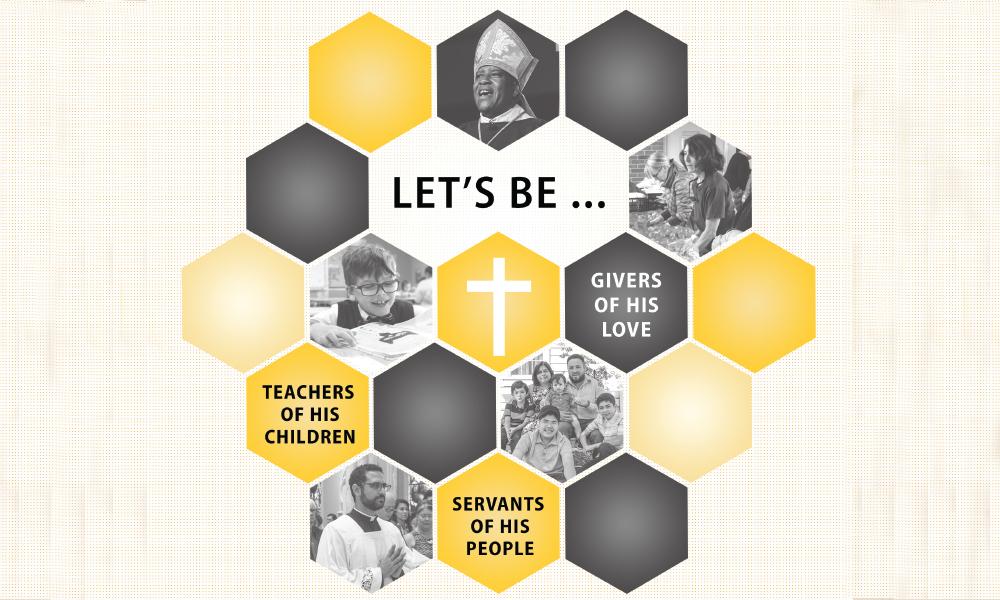
The Bees of the Lord
St. Ambrose and Our Mission
St. Ambrose and Our Mission
On the day of his ordination, Bishop Jacques Fabre-Jeune, CS, informed us of our calling to be the “bees” of Christ. In a similar way, while at San Felipé de Jesus Mission in Forest Park, Ga., he had asked his parishioners to be the “ants” of Christ. Both ants and bees are small creatures that work together to accomplish great feats. What a wonderful image for the Church carrying out her mission! Yet, you may be surprised to know that it is not a new one. The image of the Christian as a bee and the Church as a beehive goes back to the early Church.
On the day of his ordination, Bishop Jacques Fabre-Jeune, CS, informed us of our calling to be the “bees” of Christ. In a similar way, while at San Felipé de Jesus Mission in Forest Park, Ga., he had asked his parishioners to be the “ants” of Christ. Both ants and bees are small creatures that work together to accomplish great feats. What a wonderful image for the Church carrying out her mission! Yet, you may be surprised to know that it is not a new one. The image of the Christian as a bee and the Church as a beehive goes back to the early Church.
The most notable exponent of this imagery is St. Ambrose of Milan (339-397). There is actually a legend regarding bees and his childhood. As the story goes, he was attacked by a swarm of bees but, amazingly, they left him unharmed, only leaving behind a drop of honey. According to the story, his father took this as a sign of his son’s future greatness, particularly of the honey-like sweetness of his eloquent words.
This is not the only connection between Ambrose and bees. In his Hexaemeron, a theological reflection on the six days of creation in Genesis, Ambrose praises the virtues of bees while talking about the fifth day of creation (Hexaemeron, Ch. 21). He praises their common living, raising of offspring and working. He also highlights their orderliness and their unswerving devotion to their ruler (their “king”). He remarks on the order of their camp, the honeycomb, with the symmetry of its architecture. He praises the sweetness of the honey they produce, holding them up to us as models to imitate in the Christian life.
To further make this point, Ambrose cites Proverbs 6:6, which encourages us to imitate the model worker, the bee. What is interesting here is that the passage cited from Proverbs actually uses the image of the ant, which Ambrose somehow transposes into the image of the bee. So, just like Bishop Fabre, Ambrose made a shift from ants to bees in his reflection on the work of the Christian life. Because Proverbs encourages our imitation of the work of the bee, Ambrose considers the bee as an image of wisdom and virtuous living. Ambrose concludes his reflection by noting the extraordinary ability of bees to reproduce and fruitfully fill the hive. As Christians, we too are called to fruitfulness in our mission to make disciples of all nations (see Mt 28:19).
Because of the story of his childhood and his own reflection on bees, Ambrose is sometimes depicted with a beehive in artwork. He is also regarded as the patron of beekeepers. Although the image has not been widely used, the beehive subsequently has become an image of the Church, while the bee has come to be regarded as a symbol of the Christian, particularly connoting God’s will and divine election, as well as wisdom and eloquence.
This latter connotation is further bolstered by the word bee used in Hebrew Scriptures — דְּבוֹרָה or deborah — which is derived from Hebrew root meaning word — דָבַר or dbr — perhaps because of the sound that bees make. This is further seen demonstrated as Deborah (דְּבּוֹרָה) in Judges is depicted as a prophet (Jdg 4:4) who is a wise and good judge of the Israelites.
So the bee is a wonderfully fruitful image that we can embrace as we go forth to share the good news. As an image of wisdom and eloquence, of God’s call and election, of hard work and teamwork and of constant devotion, this image provides an abundance of inspiration both for our reflection and our evangelizing action.
With all of this in mind, let us embrace the call of our new bishop to be the Lord’s bees and to spread the honey-like sweetness of the Gospel far and wide, gifting the fruit of the Word of God to the world.
In the new year,
Bishop Fabre requested to rebrand the Bishop’s Annual Appeal to be more inclusive and spread to ministries across the state. Its new name is the Catholic Appeal of South Carolina, and its symbol? You guessed it — the bee!
